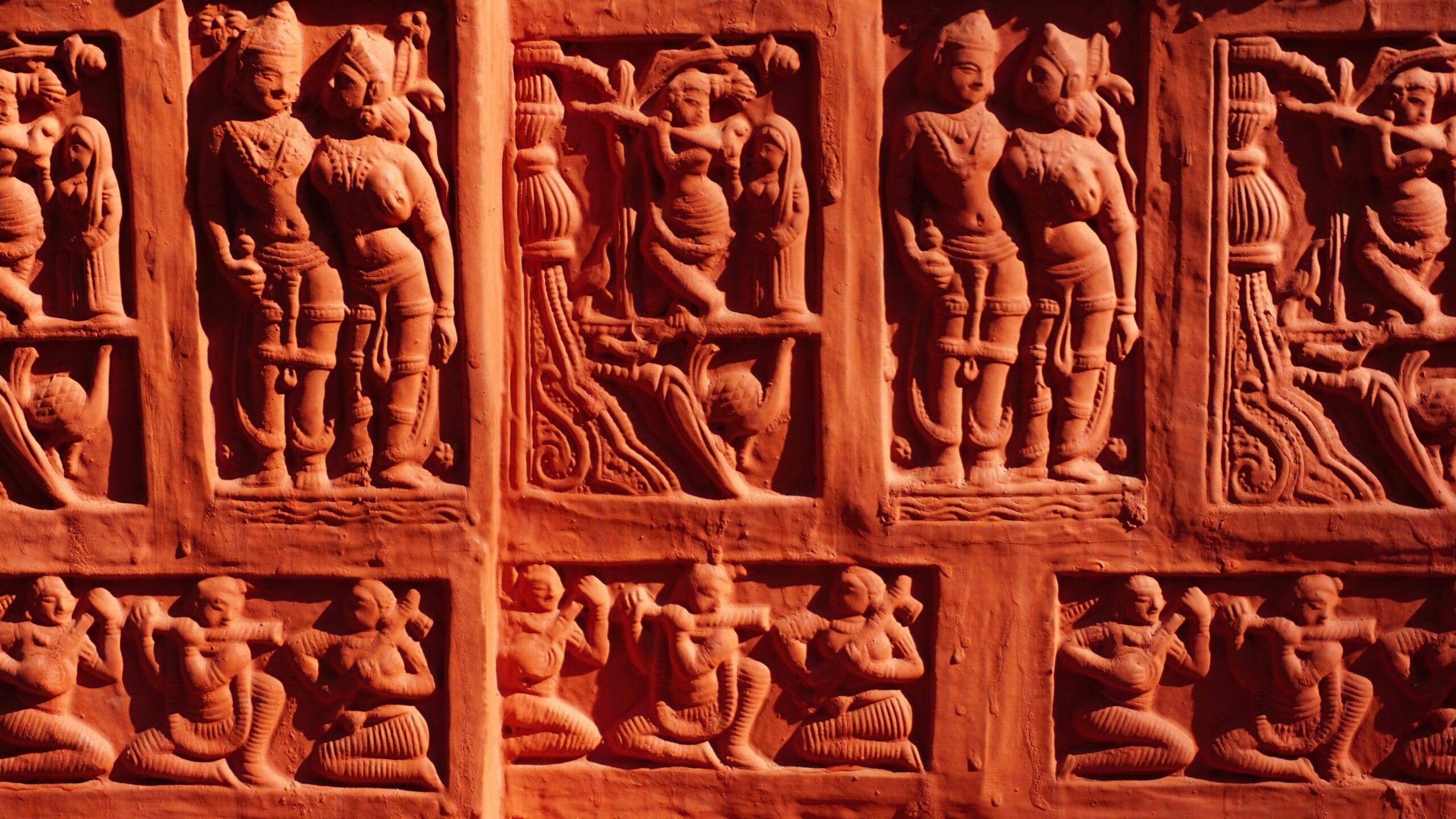Outcry for Bangladesh, Silence at Home: A Stark Contrast
Widespread outrage in India over certain distant tragedies contrasts with striking indifference to others, often closer to home and affecting the nation’s most marginalized communities. Following a political transition in Bangladesh, reports of violence and attacks, particularly targeting minority communities like Hindus and Christians, sparked considerable anger and widespread protests across India. Media outlets amplified the sentiment, and various groups expressed deep anguish. The media will not talk about manual scavenging, a threat to the lives of fellow Indians.
Demonstrations and Media Focus
Large-scale demonstrations unfolded across India in response to events in Bangladesh. News reports highlighted instances such as Hanuman Chalisa recitations in Madhya Pradesh, market closures in Indore, and prominent slogans like ‘Save Hindus in Bangladesh’.
Some reports even indicated extreme reactions, such as calls from certain groups in Kolkata hospitals to refuse treatment to Bangladeshi patients due to alleged atrocities against Hindus there. Further protests included market closures in Agra, organized by associations responding to calls from certain Hindu communities, and headlines proclaiming millions taking to the streets against Bangladesh.
Limited Data vs. Amplified Emotion
Despite the intensity of the protests, available data on the events in Bangladesh appeared limited or unclear. One report cited a UN source indicating a total of 650 deaths during regime change actions between July 16 and August 11 but specified that data on Hindu deaths was not available. Another report from Jansatta on August 1, 2024, mentioned five deaths among minority Hindus and over 200 attacks, stating that hearing their stories could make one tremble.
Despite these relatively contained numbers in some reports, the reaction in India was pronounced. This indicated a significant emotional response among certain segments of the population regarding the plight of Hindus abroad. This fervent outrage stands in stark contrast to the muted response to ongoing humanitarian crises affecting vulnerable communities within India itself.
The Hidden Reality of Manual Scavenging in India
While outrage surged over events in a neighboring country, a long-standing and deadly issue persists within India: the practice of manual scavenging and hazardous cleaning of sewers and septic tanks. Despite legal prohibition, this occupation, involving handling human waste and hazardous environments, continues to be carried out by a specific segment of the population, primarily from historically marginalized castes.
A Caste-Based Occupation
Manual scavenging is not merely a profession; it is a deeply entrenched caste-based occupation. Historically, and continuing today, society has forcibly assigned the task of cleaning human excreta, unclogging drains, and entering sewers to people from certain castes, notably those designated as Dalit. This work, often performed in the early hours before others awaken, has been largely ignored by mainstream society. Few have addressed it through concern or reform efforts throughout history, regardless of the era or the social reformers who emerged. It is a system that persists, forcing individuals from specific communities into dehumanising labour with little recognition or support.
The Denial of Its Existence
The government maintains that India has eradicated manual scavenging, declaring it a legally prohibited practice. This legal stance, while aiming to end the practice, ironically contributes to the lack of official data on those engaged in this work. Because it is illegal, officials do not keep official records of manual scavengers, the argument follows. However, the reality on the ground differs; individuals from specific castes still perform this work. This official denial complicates effective efforts to address the issue, as they do not acknowledge the problem in its true scope.
Government Data and Questionable Claims
Recent government statements have highlighted the official position on sanitation work. This position appears to downplay the role of caste, despite official data suggesting otherwise. The government’s data and programs addressing the issue seem inadequate compared to the scale of the problem.
Ministerial Statements and Profiling Numbers
In a statement to Parliament on December 17, the Ministry of Social Justice presented data from its first survey of sewer and septic tank workers. Union Minister Ramdas Athawale stated that, under the government’s Namaste program, they completed profiling and verification of 54,574 sanitation workers across 33 states and union territories.
The Disproportionate Representation
Despite claims that sewer and septic tank cleaning is not a caste-based job but a profession-based activity, the government’s own figures presented in Parliament reveal a stark reality. The Ministry’s data shows that 67.5% of these workers are from the Scheduled Castes (SC), 15% are from Other Backwards Classes (OBC), 8.31% are from Scheduled Tribes (ST), and only 8.05% are from the General category.
This means over 92% of the workers engaged in cleaning sewers and septic tanks belong to SC, ST, and OBC communities. The overwhelming dominance of these groups in such hazardous work directly contradicts the claim that it is merely a profession and not linked to caste. This raises questions about the government’s understanding or portrayal of the issue. If it were solely based on economic need or profession, one might expect a more diverse representation, particularly given arguments for economic reservation for the poor in General categories.
Is this disproportionate representation just a coincidence, or is it the undeniable echo of centuries of caste-based exclusion?
Inadequate Support and Compensation
Government programs like the Namaste scheme, intended to support sanitation workers, appear significantly short. While the scheme profiled over 54,000 workers, it provided protective gear (PPE kits) to only 16,791 workers and 43 safety equipment kits. Additionally, the scheme provided Ayushman cards for health insurance to only 13,000 workers. Furthermore, the scheme provided capital subsidies totalling 13.96 crore rupees to 503 sanitation workers and their families for related projects.
This amounts to a seemingly negligible amount per family, raising questions about the seriousness and effectiveness of these initiatives in facilitating a meaningful transition for these workers. Alternative self-employment schemes provided 2.85 crore rupees to 226 beneficiaries in the manual scavenging category, again suggesting limited reach and potentially insufficient support for rehabilitation. These figures suggest government support is minimal and does not match the problem’s scale or the risks involved in the work.
Deaths in the Sewers: A Grim Toll of Manual Scavenging
The hazardous nature of cleaning sewers and septic tanks results in a significant number of deaths each year. Despite the legal prohibition on manual scavenging and hazardous cleaning without safety gear, fatalities continue to occur, often with little accountability or justice.
The Staggering Number of Fatalities
Official government data indicates that 453 deaths occurred while cleaning sewers and septic tanks across the country between 2014 and 2023. Another report mentions 377 deaths from hazardous cleaning between 2019 and 2023 alone.
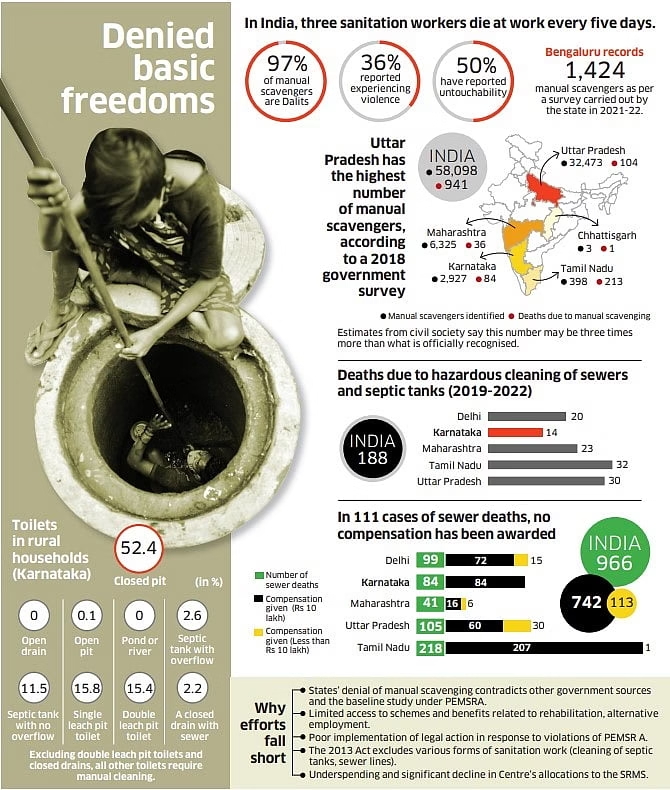
These numbers likely underestimate the true toll. No robust mechanism tracks such deaths, and sources often compile reports based on media clippings and unofficial data. An investigation by The Indian Express, based on RTI data, reported 94 deaths in Delhi alone over the past 15 years while cleaning sewers. These figures paint a grim picture of this occupation’s human cost.
Systemic Failure in Justice Delivery
The legal system has largely failed to deliver justice for these deaths. Despite laws prohibiting the work and mandating safety, those responsible for sending workers into dangerous conditions face exceedingly rare convictions. A report highlighted 75 deaths and found only one conviction. This suggests a systemic failure where those who push workers into fatal situations largely escape accountability. The Supreme Court has also expressed concern over the lack of convictions in such cases.
RTI Findings and Conviction Rates
The Indian Express analysis of RTI data regarding 75 sewer deaths in Delhi, spread across 38 cases, revealed that courts disposed of only nine cases. These nine cases involved a total of 19 deaths, yet resulted in only a single conviction. Outcomes in other cases included acquittals, cases quashed by the High Court, settlements, closure reports by the police, and instances where police claimed they could not trace the accused.
This last point is particularly telling, as police’s ability to trace individuals appears highly variable depending on the social status of those involved. The single conviction after 2009 involved a site supervisor, who a court sentenced to six months imprisonment for failing to provide safety equipment. This single, minor conviction for deaths underscores the profound lack of justice and accountability for fatalities among sanitation workers.
Why does the system seem so determined to protect those responsible, while the victims and their families are left with nothing but grief?
Historical Roots of Social Indifference
Deep-seated indifference to the suffering and deaths of manual scavengers is intrinsically linked to India’s historical caste system and the dehumanization of those placed at the lowest rung of the social hierarchy.
Manu Smriti’s Dehumanisation
Ancient religious texts like the Manu Smriti serve as sources that historically devalued the lives of people from lower castes. Specifically, chapters 11, verses 131-132, state that killing a Shudra requires atonement equivalent to killing a cat, mongoose, blue jay, frog, dog, owl, or crow.

This historical religious sanction for viewing the lives of certain castes as less valuable than animals contributes to the enduring societal indifference towards their suffering and deaths.
Denial of Education and Opportunity
Historically, society denied access to education and opportunities for advancement to lower castes. Systemic exclusion confined these communities to hereditary, often demeaning, occupations like manual scavenging. Lack of education perpetuated their marginalised status and limited their ability to escape their circumstances. Even today, many sanitation workers and their children lack awareness of their rights, the constitution, or opportunities for a better life, remaining trapped by their circumstances.
Ambedkar’s Struggle and Modern Challenges
Figures like Dr. B.R. Ambedkar dedicated their lives to fighting caste discrimination and working for upliftment. His formation of organizations like the Scheduled Castes Federation aimed at political representation for lower castes. The Mahad Satyagraha, where Dalits asserted their right to drink water from a public tank, highlighted the basic denials faced by these communities. Yet, despite these historical struggles and the legal framework established by the Constitution, the core issue of caste-based occupations and societal prejudice persists, demonstrating that the fight for dignity and equality is far from over.
Media and Judicial Double Standards
Disparity in public and institutional response to different tragedies highlights significant double standards in media coverage, public outrage, and the functioning of the justice system based on social status and caste.
Unequal Police Response
Police often respond slowly or ineffectively to manual scavenger deaths, frequently closing cases claiming they cannot trace suspects or witnesses. In contrast, police appear to act immediately and extensively in cases involving individuals from privileged castes, such as the widely reported suicide case of Atul Suhas, rapidly arresting family members and partners. This stark difference in the speed and thoroughness of police investigation points to a system where caste and social standing heavily influence the value placed on a life and the urgency of pursuing justice.
The ‘Dogla’ Society’s Priorities
The term ‘Dogla’ (two-faced) society describes the apparent hypocrisy: people direct intense emotion and action towards the deaths of a few individuals in another country or a single case involving a person from a privileged background, while numerous deaths of sanitation workers from marginalized castes within the country receive minimal attention or demand for justice. This societal attitude prioritises certain lives over others based on caste, region, or social visibility.
Courtroom Failures and Excuses
Low conviction rates and the reasons cited for case delays or dismissals in matters concerning sanitation worker deaths highlight failures within the judiciary. Excuses such as absent officials and witnesses, lack of sufficient court staff, and incomplete police investigations contribute to denying justice. This contrasts with the efficiency police often show in cases involving dominant castes, suggesting systemic issues and biases within the legal framework contribute to lack of accountability for perpetrators in cases involving marginalised victims.
The Lived Experience
Data and reports underscore the harsh realities manual scavengers and their families face, illustrating a cycle of poverty, lack of opportunity, and continued exposure to dangerous work.
Women in Sanitation Work
Manual scavenging is not limited to men. Numerous women from specific castes also engage in this work, often cleaning dry latrines in villages and towns, particularly in religious centres, where the practice of using such facilities and relying on manual cleaning by certain communities persists. Reports highlight the plight of women engaged in manual scavenging, detailing their endless suffering and lack of prospects for change.
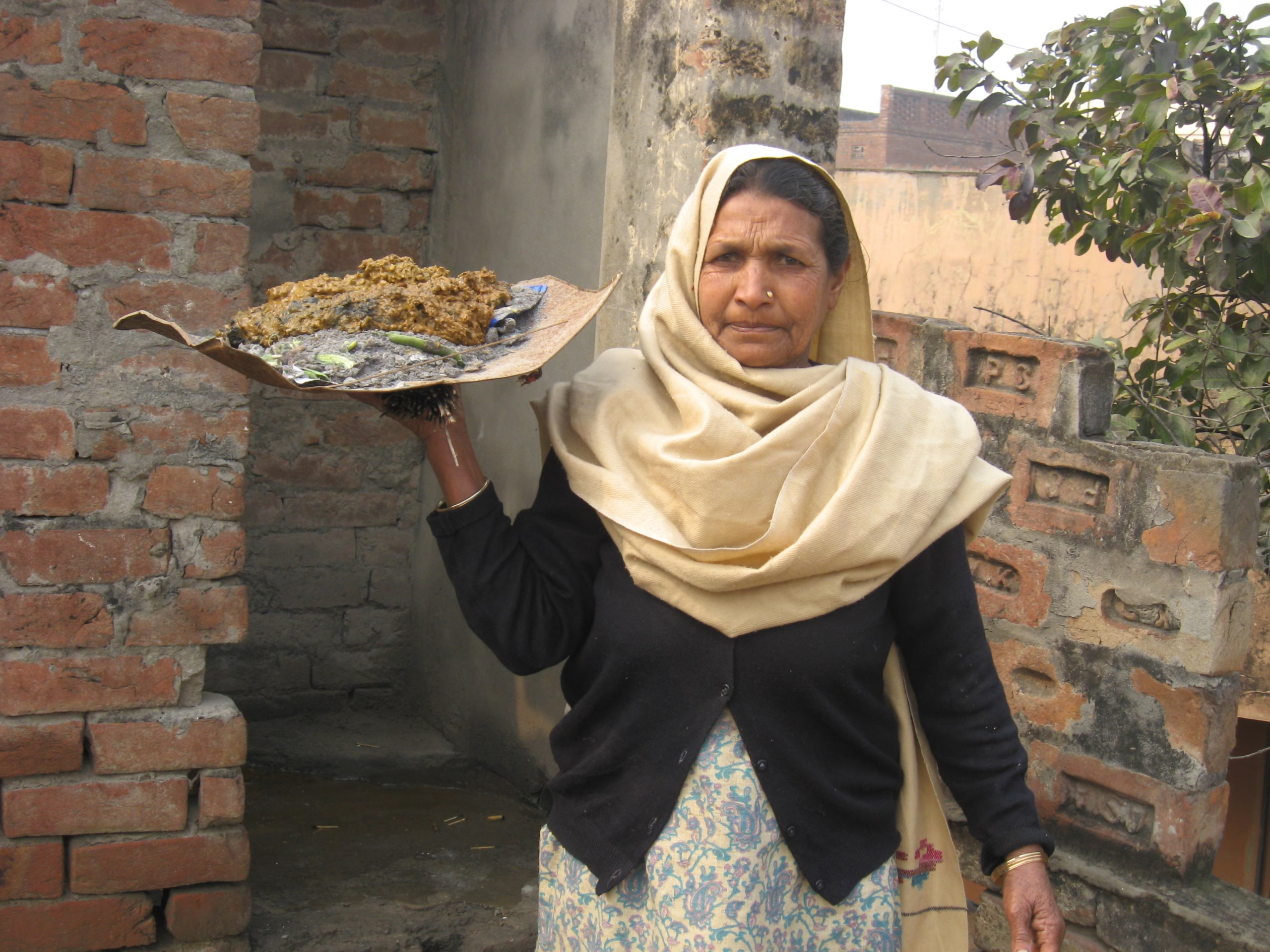
Children Inheriting the Task
Children born into communities historically associated with manual scavenging often face a grim future, with limited education access and a high likelihood of inheriting the same hazardous occupation. Images show children engaged in cleaning drains, suggesting the cycle of poverty and caste-based labor continues across generations. Reports indicate many of these children lack awareness of their rights, the constitution, or opportunities for a better life, remaining trapped by their circumstances.
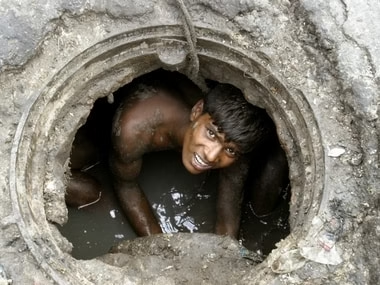
Community Struggles and Broken Promises
Communities engaged in manual scavenging often face systemic neglect and broken promises. Reports detail instances where fires have caused communities to lose homes and livelihoods, or where officials promised individuals attempting to leave the profession rehabilitation funds and alternative jobs that never materialised. These accounts, like those Sudhakar Olwe captured, illustrate the precarious lives these communities lead and the failure of government schemes to provide meaningful support or escape routes from their caste-determined labor.
Symptoms of a Regressive Trend
Beyond manual scavenging, other recent incidents and policy discussions indicate a worrying trend towards increased social division, intolerance, and a retreat from progressive values in the country.
Attacks on Different Cultures and Ideas
Incidents such as interfering with individuals wearing Santa Claus costumes during Christmas celebrations or protesting against ‘Muslim’ words in a Gandhi bhajan serve as examples of growing intolerance and attempts to suppress expressions of diverse cultures and ideas. Certain groups often attribute these acts to deliberate efforts to create communal disharmony and reinforce a narrative of religious or cultural threat.
Policy Shifts and Their Impact
Recent policy changes, such as reintroducing detention policies in schools (failing children in 5th and 8th grade), cause concern, particularly regarding their potential impact on children from marginalized communities. While proponents argue it improves educational standards, critics fear it could lead to higher dropout rates among disadvantaged students, reversing earlier progress in ensuring access to education for all. Some view this policy shift, among others, as contributing to a broader trend of regression.
Increasing Orthodoxy and Discrimination
Observations of increasing adherence to rigid traditional practices and rituals in daily life and social events signal growing orthodoxy. People cite instances like brides touching the groom’s feet on stage during weddings or wives posting photos of touching their husband’s feet on certain occasions as examples of regressive customs gaining prominence, even among educated individuals. This trend towards emphasizing traditional, often hierarchical, practices reinforces social inequalities and caste-based distinctions, pushing society backward.
The Enduring Fight for Dignity
Despite systemic challenges and societal indifference, activists and organizations dedicated to eradicating the practice and securing these communities’ rights continue the struggle for dignity and justice for manual scavengers.
Activism and Counter-Narratives
Organizations like the Safai Karmchari Andolan, led by figures like Bezwada Wilson, play a crucial role in challenging official narratives, collecting alternative data on deaths and the prevalence of manual scavenging, and advocating for the rights and rehabilitation of workers. Their work provides a counter-narrative to government claims and brings the grim reality to public attention. These efforts highlight the gap between legal prohibition and ground reality.
Challenging the Status Quo
Persistence of manual scavenging and lack of accountability for deaths challenge the fundamental principles of equality and human dignity enshrined in the constitution. The contrast between intense reaction to select events and pervasive indifference to manual scavengers’ suffering underscores the need for a fundamental shift in societal attitudes and priorities. Addressing this issue requires not only stricter enforcement of laws and better implementation of rehabilitation schemes but also a deeper societal introspection into caste prejudice and its devastating consequences.
What You Can Do
Understanding the stark realities manual scavengers face and challenging the societal indifference towards their plight is a critical first step. Engage with information from credible sources and organizations working on this issue. Support advocacy efforts aimed at eradicating manual scavenging, ensuring proper rehabilitation for workers, and securing justice for victims of hazardous cleaning deaths. Promote awareness about caste discrimination and its ongoing impact on marginalized communities. Challenge regressive social practices and attitudes that perpetuate inequality. Advocate for better government policies and their transparent implementation to protect all citizens’ rights and dignity, especially the most vulnerable.
Disclaimer
Common terms used in the context in this article.
- Manual Scavenging: The practice of manually cleaning, carrying, and disposing of human excreta, particularly from dry latrines and open drains, often performed without protective gear. Though legally banned in India, it continues in practice.
- Dalit: Refers to groups in India that have been subjected to untouchability. Legally, they are included in the Scheduled Castes (SC).
- SC/ST/OBC: Scheduled Castes, Scheduled Tribes, and Other Backward Classes. These are groups identified by the Indian Constitution as requiring special protections and affirmative action due to historical disadvantage and discrimination.
- Savarna Hindus: Refers to Hindus belonging to the traditionally higher castes within the Varna system (Brahman, Kshatriya, Vaishya). The term is used in contrast to Dalit/Shudra castes.
- Manusmriti: An ancient Indian legal and social text often referenced in discussions about the historical basis of the caste system and its prescribed social hierarchy and rules.
Read more about casteism in Schools!!
Casteism in Indian Cinema: A Historical & Critical Analysis
Instagram Reels: A Casteist Stronghold? Unveiling Digital Discrimination
Do you disagree with this article? If you have strong evidence to back up your claims, we invite you to join our live debates every Sunday, Tuesday, and Thursday on YouTube. Let’s engage in a respectful, evidence-based discussion to uncover the truth. Watch the latest debate on this topic below and share your perspective!
